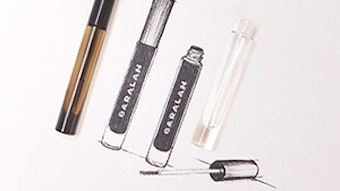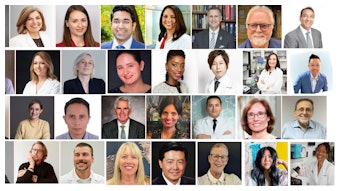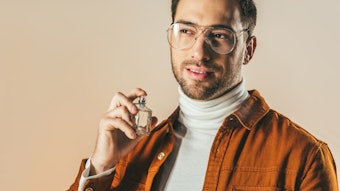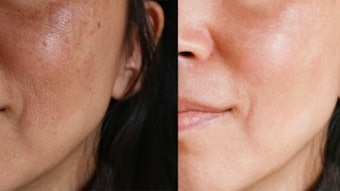- There is a long list of test offerings and options to choose from, so it’s best to work with your testing company to figure out what you really need.
- It’s important to develop a relationship with a testing company you trust so you know what you need, what you can expect and where there are new opportunities.
- A quality brand-testing company relationship opens opportunities, as some tests that are not necessarily required may enhance the potential of the product and brand.
- Testing is not always be about exciting new claims and discoveries; it can be about ensuring consistent quality.
Testing certainly isn’t the flashiest part of beauty product development, but it just might be one of the most important. “From both a consumer’s and a manufacturer’s point of view, testing is necessary to ensure the safety, quality and efficacy of the products before they enter the marketplace,” explains Howard Kaminsky, director of advertising and marketing, AMA Laboratories, Inc. “Almost every cosmetic product intended for human use needs to be tested. The Food and Drug Administration, the Environmental Protection Agency, the Federal Trade Commission, the cosmetic industry and more, they all have certain standards that have to be maintained and regulations that have to be adhered to.”
Craig R. Weiss, president of Consumer Product Testing Company, also notes, “Without testing it would be impossible to establish product safety. Secondarily, since efficacy claims are a large part of the marketing of cosmetic products and all performance-based claims need to validated, efficacy testing is absolutely necessary.”
Confirming this, Alisa Marie Beyer, founder of The Beauty Company and GCI editorial advisory board member, offers, “Based on The Beauty Company’s nine years of research and experience, we found that consumer claims, driven from consumer testing studies, are crucial in the eyes of the consumer; 93% of women look for efficacy claims before purchasing a beauty product. Beauty product testing (BPT) is so important because it validates the product’s benefits and provides consumers and retailers alike a reason to believe.”
Test Choices and Options
In regard to safety testing for beauty and cosmetic products, according to Bioscreen Testing Services, the most common single tests include RIPT, the repeated insult patch test, which uses subject panelists to find data related to contact irritation and sensitization from a product; AET, the antimicrobial efficacy test, which is a must for any product containing water as it needs preservative effectiveness testing; and stability testing, which tests the shelf life of a product, needed by nearly all products in some form.
Kaminsky also adds another important potential beauty product test. “Sun protection factor—if you’re going to put a numerical value on a sunscreen product, the procedure is dictated by the Food and Drug Administration, because technically, sunscreens are over-the-counter drugs,” he explains.
Test offerings and options for beauty products can seem almost endless—“We offer hundreds of different testing, and maintain specialty panels for geriatric, pediatric, diabetic and sensitive skin, just for a few examples,” says Weiss, noting it’s best to work with your testing company to figure out what you really need. Weiss also comments, “The most popular single test is a safety test, the human repeated insult patch test (HRIPT)—the basic safety test for much of this industry.”
In efficacy testing, the options also are numerous, but there are areas of popularity. “In the marketplace now, the largest group of efficacy tests is aimed at reducing the appearance the signs of aging, wrinkle reduction, elasticity, age spots and more,” Weiss says, and Beyer agrees, saying, “Anti-aging skin care is the category leader in testing.”
Beyer’s company, The Beauty Company, offers consumer panel tests, helping to discover and evaluate product claims beyond safety and straightforward efficacy. “A market-ready BPT is the most popular type of test that we run with our clients,” she explains. “This trial tests a product that is conditionally approved for in-market commercialization and has undergone appropriate safety and stability testing to a defined panel of target consumers. In short, this product is ready to be put into the hands of consumers. Claims generated through this type of trial can be used on primary and secondary packaging, promotional materials and other marketing elements such as websites, press kits and social media.”
Additionally, Beyer notes, “We also run pre-market prototype testing, which is where panelists test the initial offering in its non-finalized stage. By taking a deep-dive into the consumer’s reactions and interactions with the product—including application, ease of use and effectiveness—we can point out red flags and in-market inhibitors and provide optimization opportunities.” This kind of testing represents an excellent opportunity for beauty brands to discover new claims and substantiations for their products.
Testing companies/providers, as a whole, also continues to innovate their own tests to help beauty brands with new ideas and offerings. “We’ve developed a number of novel tests and ways to substantiate efficacy,” says Kaminsky. “We have an analytical system that we’ve developed—an efficacy analytical system—called PhotoGrammetrix. We’re also working on 3D modeling, which is going to be a big thing in the future.”
Of course, testing can also mean quality control testing, and that’s where companies such as Brookfield Engineering can come in. Brookfield offers a machine called a texture analyzer, which can help beauty brands test lipsticks, eye pencils, creams and lotions, powder compacts and more from a quality control standpoint.
“A texture analyzer is nothing more than an instrument that can compress something or pull it apart,” explains Bob McGregor, general manager, global marketing, Brookfield Engineering. “In the cosmetics world, [it can be used] to simulate what customers do with lipsticks. With lipstick, you press it on your lips and you draw it across your lips, which is a shearing action. So you’d like to make sure the lipstick has enough integrity that it’s not going to snap on you, or that it doesn’t flake or smear. We make very simple devices that can physically hold a lipstick in place and run a bending test—meaning, poke on the part of the lipstick that’s extended from its cylinder and push down to see how much force it can withstand before it physically snaps off.”
Through a variety of attachments, such machines also can test the breaking points of powder compacts, using a very thin rod to poke into the pack to see if it fractures or splits apart; as well as extrusion capabilities for creams and lotions; and the combability of shampoos and other hair care products. According to McGregor, “It physically takes hair—a wig, if you will—and it allows shampoo manufacturers to put the shampoo into the hair, and then it will physically drag a comb through the hair to see what the resistance is.”
In regard to safety, efficacy and quality control, there is virtually nothing that can’t and shouldn’t be tested when it comes to beauty products.
Working Together
With the plethora of testing available, it can get quickly overwhelming. That’s why it’s important to develop a relationship with a testing company you trust so you know what you need, what you can expect and where there are new opportunities.
For instance, timeliness. “Safety testing takes a minimum of eight to 10 weeks to conduct even the most rudimentary test program,” explains Weiss. “Efficacy or claims support studies take between four and 12 weeks to conduct, but prior to starting the study, a test protocol needs to be establish, which also takes time.” For the consumer panels The Beauty Company conducts, Beyer describes, “The overall process ultimately depends on the trial length. We usually plan for about two weeks of prep work; within this time, we use the product ourselves to help simulate the consumer experience, craft the consumer claims, recruit the ideal target panel and mail out the test product. Typical trials run anywhere from seven to 28 days and beyond. Once the trial finishes the testing phase, we spend time analyzing the data, reviewing the consumer’s feedback and generating the final results and next-steps forward for launching the product in-market.”
She continues, “We tailor every trial to meet our client’s exact needs; every SKU or product collection varies by brand, so each requires its own trial set-up. We design every trial with the end goal in mind; some products only need to be tested for instant/immediate day-one claims, while other products require rigorous 28- or 56-day tests. Other nuances include panel size; different retailers have specific guidelines. Some trials can get away with having as little as 35 panelists, but the industry standard is often 100 participants or more.”
Communication throughout the testing process is key. “We have a very good exchange of information as the testing proceeds. If it’s a skin irritation test that takes four weeks long to conduct, we will give [the brand owner] topline information. Or if they call to inquire as to how it’s progressing or if we’ve found problems so far, we will, of course, let them know,” Kaminsky says. “If changes need to be made or if reformulations need to be put together, the sooner they have the information, the better they can deal with it.”
A quality brand-testing company relationship also opens the possibility to get in on new tests and opportunities. Kaminsky notes, “We sometimes like to recommend the kinds of tests that are not required but that may enhance the image of the product, and allow [the brand] to make claims that maybe the competition is not able to make or hasn’t thought about making.” And Beyer says, “Clients can choose to run additional studies such as a double-blind comparison survey, an in-person focus group, or before-and-after photography.”
What Testing Provides Brands
Besides the peace of mind of a safe and effective product, testing in beauty provides brands distinct chances to really set their products apart. “It’s a highly competitive industry, and everybody’s fighting for SKUs and shelf space. So the more info you have, the better your product appears, and—I believe—the louder the customers will talk about it,” says Kaminsky. “What I think is unique about our testing is that we look for the slightest advantage for the client to maximize in their sales efforts.”
It’s also important just to ensure your products are still on the ball. “I think that many brands need to review their safety testing programs, as many company’s need to differentiate products that need additional safety evaluation,” Weiss urges. “Products used around the eyes, products intended to marketed to children and products sold as regimen should be reviewed, just to name a few.”
Testing is not always be about exciting new claims and discoveries; it can be about ensuring consistent quality. “The biggest need is to be consistent in terms of what brands are producing so that consumers aren’t disappointed. The only way you can do that is to run quick, inexpensive tests on each batch to make sure that they are meeting specification,” says McGregor.
But to truly stand apart in the industry, get creative with your efficacy and product development testing. “Skin care, color cosmetics, body care, hair care, nail care, fragrance, personal care and the beauty device categories all can reap the benefits of consumer testing by getting their product in the hands of their ideal consumer. Listening to her and learning about her experience with the usage, application, texture, scent, look and feel of the product can verify any product offering,” says Beyer. “We provide the independent voice and credibility needed in an increasingly highly regulated environment. Also, by knowing women and intimately understanding what they are looking for in their product offerings, we work to optimize a brand’s claim set. Having conducted hundreds of studies, we know the category benchmarks and what the competition is saying; we have optimized our methodology to provide best-in-class claims, insights and validation.”










